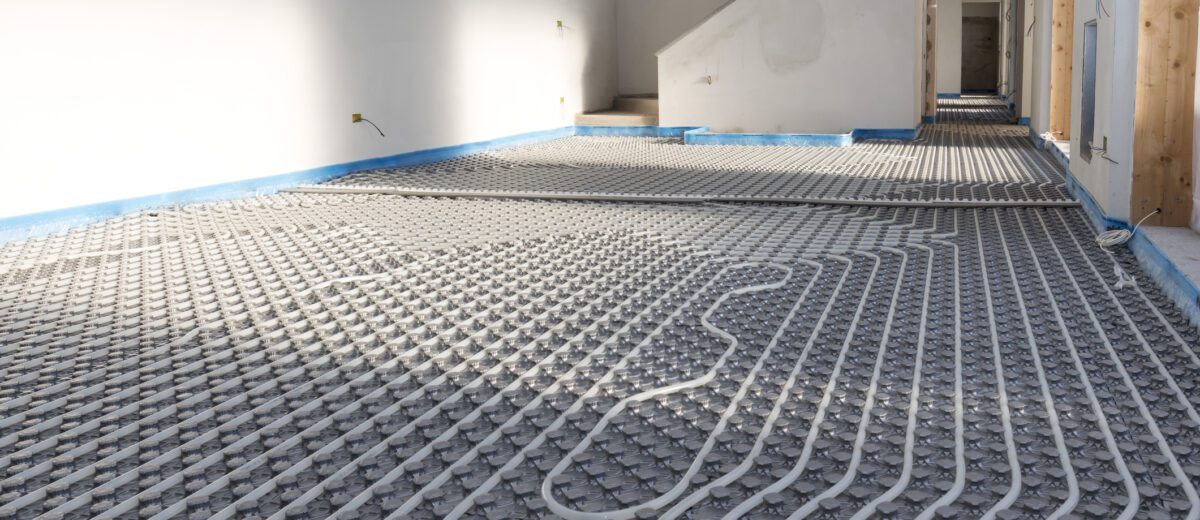RADIANT HEAT: The Good, The Bad and the Inefficient: Not all Radiant Heating Systems are Created Equal ~ By Gina Philippon
RADIANT HEAT – Not all Radiant Heating Systems are Created Equal-
What could be better on a cold, windy winter day than a cozy warm floor to walk on? Radiant heated floors are considered to be one of the most comfortable, steady and efficient ways to heat your home. But not all radiant heating systems are created equal.

HOW IT IS INSTALLED: There are many different ways to install radiant heat. Tubing can be tied to box mesh and poured directly into a concrete slab or basement floor to create a thermal mass. This method referred to as “radiant slab” is the least expensive means of installation. It is also the slowest to respond to adjustments of the thermostat due to the mass of concrete that needs to either heat up or cool down. The recommended way to control a radiant slab is to “set it and forget it.”
The “lightweight over-pour” is a way to achieve the same mass on upper level living floors. The tubing is fastened to the subfloor and a light weight gypcrete is pumped onto the floor covering the tubing. Once cured, it will perform in a similar way to the radiant slab described above.
⇐Pictured here is the most common method of installing radiant heat on levels above the basement is known as “staple-up.” In a staple-up installation aluminum heat transfer plates, with a track to accept the tubing, are fastened to the under side of the floor in the joist cavity. The tubing is placed into the track and once heated, the aluminum transfers the warmth evenly over the floor. Thin bubble wrap insulation with a reflective coating is installed under the tubing to encourage the heat up towards the floor. The response time is faster than a slab or over-pour installation but still relatively slow. “Staple-down” is similar but as the name suggests, it is installed over the sub flooring rather than under.
Another method which is becoming more popular is the dry panel radiant heating system which installs as the sub-floor. Similar to staple-up, it has a track and aluminum plates. This product is in direct contact with the finish flooring so it provides rapid response while maintaining low temperature efficiency.
NOT ALL RADIANT SYSTEMS ARE EQUAL. There is a radiant floor and then there is a radiant floor done right. Frequently MCES has bid on radiant installation projects to be told that our price was significantly higher than competitors. What is the reason for the difference? We do it right. Tubing can be fixed to the underside of flooring without plates which saves significantly on materials and labor but the water temperatures must be much higher to adequately heat. The installation cost savings will be negated over time by increased operating cost and fuel consumption. One manufacturer produces a radiant tubing specifically designed to be used without plates and is rated for 180° supply water. The efficiency of a system like this is poor compared to a high-efficiency installation method. And we here at MCES are all about efficiency!
Whether you want to add a radiant floor zone to your existing home, trouble shoot a problematic system or are building new and want the comfort and convenience of a radiantly heated home, you can trust MCES to recommend the REHAU family of radiant products and to install it right!



